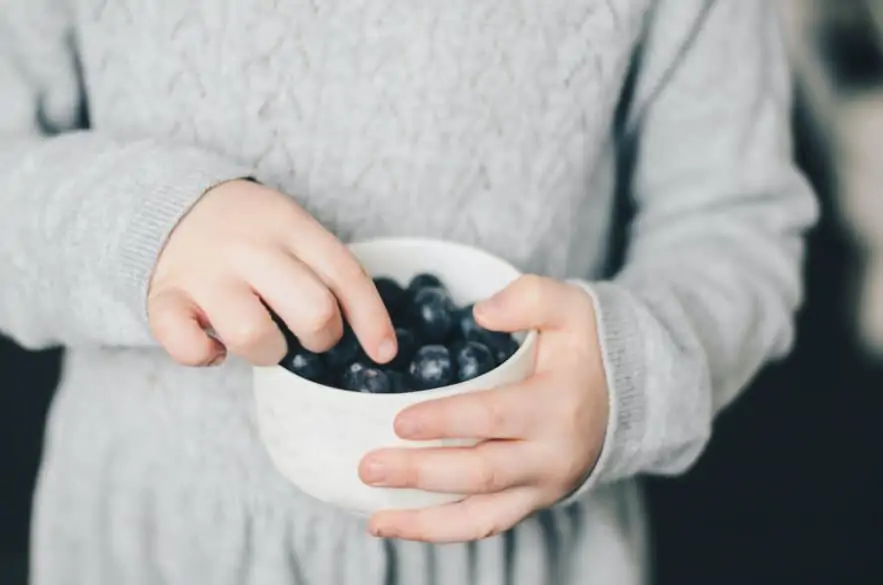Have you ever wondered if you should feed your kids more organic food? Is there really a difference between what you are already feeding them and organic?
Why Organic?
Sometimes there is skepticism around the importance of eating organic foods and using organic products. People will ask, “Does organic really make that much of a difference?”
The short answer to that question is: yes.

It’s not hard to find hundreds of stories where people have switched to an organic diet and have seen major improvements in multiple areas of their life. Their stomach stops bloating, their skin clears up, and they even have improvements in mental health. Many parents also report that their kids are better at focusing, have decreased behavior problems, and see improved digestion as well.
The argument used by many people, against organic, is “This is the same food I’ve been eating my entire life.” But the fact is, the food we eat now is not grown or processed the same way it was back in 1980 or 1990. The food industry has changed. Food is actually quite different than it was a few decades ago. Even though it may appear to be the same or packaged the same.
Making the Switch
Switching over to a completely organic diet can feel overwhelming. Especially when you have picky eaters and meal time already feels draining. But making the switch to organic doesn’t have to happen all at once. Start by replacing either one pantry item, fruit, or vegetable each shopping trip.
Often when people think of buying organic foods, they think of specialty stores like Whole Foods and Trader Joes, but Costco actually offers a large variety of organic foods. You don’t have to make an extra trip to a specialty store. With a little conscious effort, you can pick up organic items while on your regular monthly Costco run.
Kids Favorites
A good place to start making the switch to organic is with your kids favorite snacks or meals. Since kids often eat the same foods over and over, it’s important to try and get them eating their favorite meals and snacks in their organic forms as much as possible.

Organic vs Traditional Comparison
Let’s compare the ingredients of a traditional peanut butter and jam sandwiches vs. and an organic PB&J.
Peanut Butter
Costco offers a “Kirkland Signature” Organic Peanut Butter that is creamy and delicious. The oil in natural peanut butter does separate out, so when you first open the jar you will need to mix it together and then store it in your refrigerator after opening.
The ingredients for this peanut butter are: Dry Roasted Organic Peanuts and Sea Salt.
In comparison, the traditional Skippy Creamy Peanut Butter’s ingredients are: Roasted Peanuts, Sugar, Hydrogenated Vegetable Oil (Cottonseed, Soybean and Rapeseed Oil).

Strawberry Jam
Costco also offers a “Kirkland Signature” Organic Strawberry spread, which is a delicious jam.
The ingredients listed for this jam are: Fresh Organic Strawberries, Organic Sugar, Fruit Pectin, and Citric Acid.
The traditional Smucker’s Strawberry Jam’s ingredients are: Strawberries, High Fructose Corn Syrup, Corn Syrup, Sugar, Fruit Pectin, and Citric Acid.
White Bread
You can find organic white bread at Costco as well. The name of this bread is, “Dave’s Killer Bread White Bread Done Right.”
The ingredients listed are: Organic flours. (Organic wheat flour, organic whole wheat flour, organic barley flour, organic rye flour, organic spelt flour, organic millet flour, organic quinoa flour, organic potato flour.) water, organic cane sugar, organic cracked whole wheat, organic expeller pressed canola oil, contains 2% or less of each of the following: sea salt, yeast, organic wheat gluten, organic cultured wheat flour, organic vinegar, organic acerola cherry powder, enzymes.
Compared to the traditional white bread of the brand Grandma Sycamor’s, the ingredients listed are: Enriched Wheat Flour [Flour, Malted Barley Flour, Reduced Iron, Niacin, Thiamin Mononitrate (Vitamin B1), Riboflavin (Vitamin B2), Folic Acid], Water, Sugar, Salt, Potato Flakes, Yeast, Cultured Wheat Flour, Grain Vinegar, Citric Acid, Soy Lecithin.
Hopefully this comparison helps you to see how many excess and dangerous ingredients are in traditional brands. And by making a few simple switches to organic brands it allows you to serve your children healthier food.
